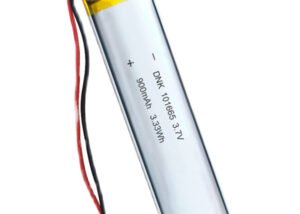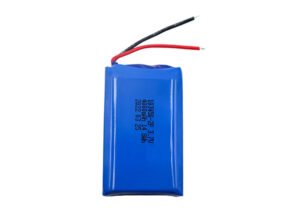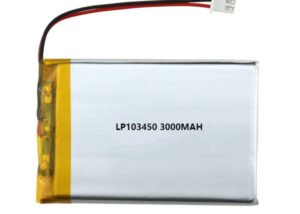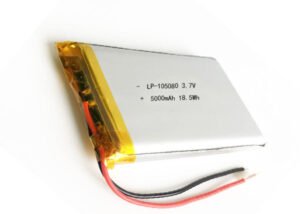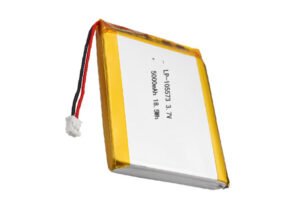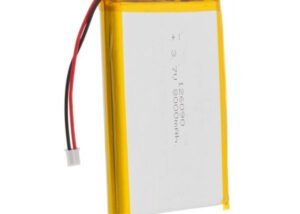Lithium Polymer Battery in Medical Equipment
Lithium Polymer Battery, also known as LiPo battery, is a rechargeable battery that uses a polymer electrolyte instead of a liquid electrolyte. It is widely used in various electronic devices, including medical equipment. The importance of Lithium Polymer Battery in medical equipment cannot be overstated, as it enables the development of portable, wireless, and implantable medical devices that can improve patient care and healthcare delivery.
Advantages of Lithium Polymer Battery in Medical Equipment
The following are the key advantages of Lithium Polymer Battery in medical equipment:
- High energy density: Lithium Polymer Battery has a higher energyz density than other types of rechargeable batteries, which means it can store more energy in a smaller and lighter package. This is particularly important for portable and implantable medical devices that require long-lasting power and minimal weight.
- Light weight and compact size: Lithium Polymer Battery is thinner and lighter than other types of rechargeable batteries, making it ideal for medical devices that need to be small, lightweight, and easy to carry.
- Long cycle life: Lithium Polymer Battery has a longer cycle life than other types of rechargeable batteries, which means it can be charged and discharged more times before losing its capacity. This is important for medical devices that need to last for a long time without requiring frequent battery replacement.
- Low self-discharge rate: Lithium Polymer Battery has a low self-discharge rate, which means it can retain its charge for a long time without being used. This is important for medical devices that may not be used for long periods but need to be ready for use at any time.
- High discharge rate: Lithium Polymer Battery has a high discharge rate, which means it can deliver power quickly when needed. This is important for medical devices that require a burst of power, such as defibrillators or emergency ventilators.
- Fast charging time: Lithium Polymer Battery can be charged quickly, which means medical devices can be ready for use in a short amount of time. This is important for medical devices that need to be available at all times.
Applications of Lithium Polymer Battery in Medical Equipment
Lithium Polymer Battery is used in various medical devices, including the following:
- PORTABLE MEDICAL DEVICES: Lithium Polymer Battery is used in portable medical devices, such as blood glucose meters, pulse oximeters, and nebulizers. These devices are lightweight, compact, and easy to carry, making them ideal for patients who need to monitor their health on the go.
- IMPLANTABLE MEDICAL DEVICES: Lithium Polymer Battery is used in implantable medical devices, such as pacemakers, defibrillators, and neurostimulators. These devices are small, lightweight, and designed to be implanted inside the body, providing long-lasting power without requiring frequent battery replacement.
- Healthcare monitoring devices: Lithium Polymer Battery is used in healthcare monitoring devices, such as wearable devices that track a patient’s vital signs, activity levels, and medication adherence. These devices can transmit data to healthcare providers in real-time, enabling remote monitoring and early intervention.
- 4. Medical imaging equipment: Lithium Polymer Battery is used in medical imaging equipment, such as ultrasound machines and portable X-ray machines. These devices require high power and long-lasting battery life to provide accurate and timely diagnosis.
Safety Concerns of Lithium Polymer Battery in Medical Equipment
While Lithium Polymer Battery has many advantages, it also poses some safety concerns, particularly in medical equipment. The following are the key safety concerns of Lithium Polymer Battery in medical equipment:
- Risk of explosion or fire: Lithium Polymer Battery can catch fire or explode if it is damaged or exposed to extreme temperatures. This can pose a risk to patients and healthcare providers, particularly in implantable medical devices.
- Proper handling and storage: Lithium Polymer Battery requires proper handling and storage to prevent damage and ensure safe operation. Healthcare providers should follow the manufacturer’s instructions for handling and storing Lithium Polymer Battery.
- Regulatory compliance: Lithium Polymer Battery is subject to various regulations and standards, including those set by the US Food and Drug Administration (FDA) and the International Electrotechnical Commission (IEC). Healthcare providers should ensure that their use of Lithium Polymer Battery complies with these regulations and standards.
Future of Lithium Polymer Battery in Medical Equipment
The future of Lithium Polymer Battery in medical equipment is bright, as advancements in battery technology and integration with IoT devices are expected to drive innovation and improve patient care. The following are the key trends shaping the future of Lithium Polymer Battery in medical equipment:
- Advancements in battery technology: Researchers are working on developing new battery technologies that can improve the performance and safety of Lithium Polymer Battery. For example, solid-state batteries are being developed as an alternative to traditional Lithium Polymer Battery, which can offer higher energy density and improved safety.
- Integration with IoT devices: Lithium Polymer Battery is being integrated with IoT devices, such as wearable devices and smart sensors, to enable real-time monitoring and early intervention. This can improve patient outcomes and reduce healthcare costs.
- Increased demand for portable and wireless medical devices: The demand for portable and wireless medical devices is expected to increase in the coming years, as patients seek more convenient and accessible healthcare options. Lithium Polymer Battery is well-positioned to meet this demand, as it offers high energy density, light weight, and fast charging time.
In all, Lithium Polymer Battery is a critical component of medical equipment, enabling the development of portable, wireless, and implantable medical devices that can improve patient care and healthcare delivery. While Lithium Polymer Battery has many advantages, it also poses some safety concerns, which should be addressed through proper handling and storage and regulatory compliance. The future of Lithium Polymer Battery in medical equipment is promising, as advancements in battery technology and integration with IoT devices are expected to drive innovation and improve patient care.


